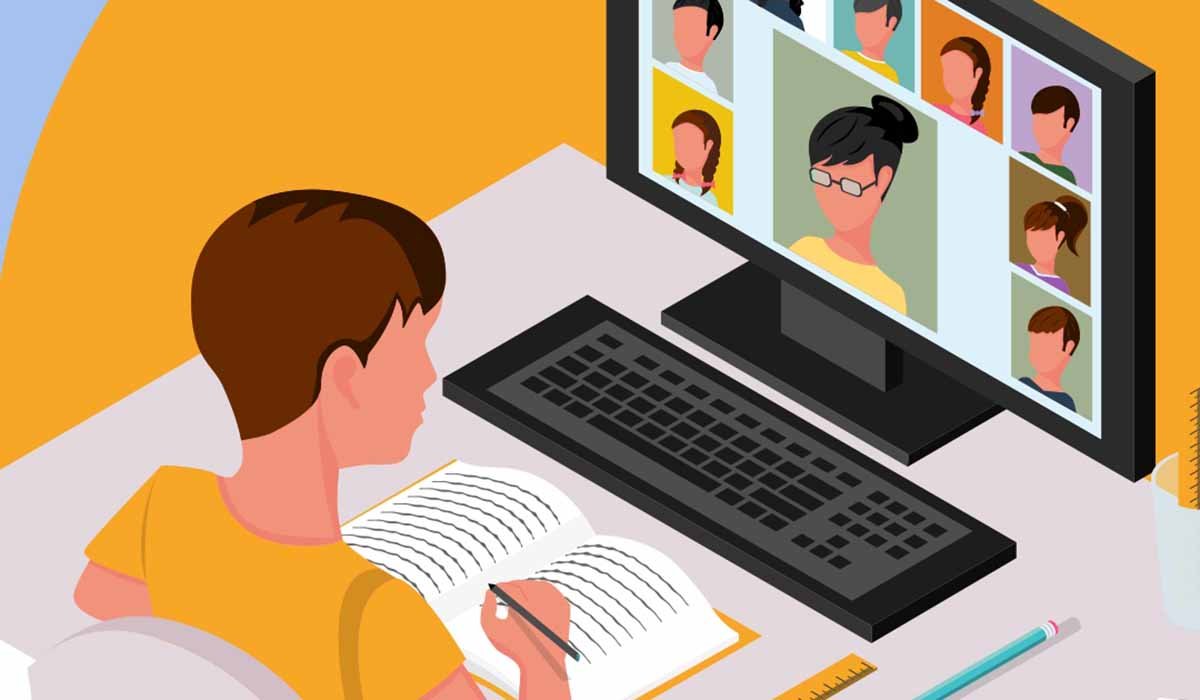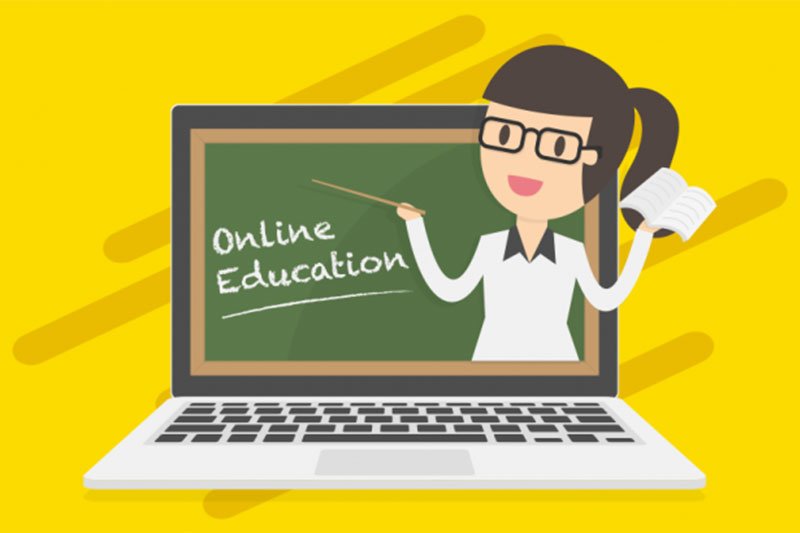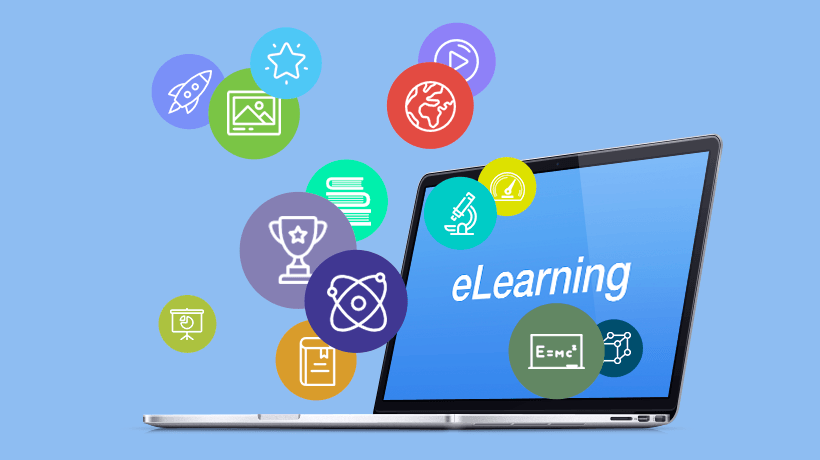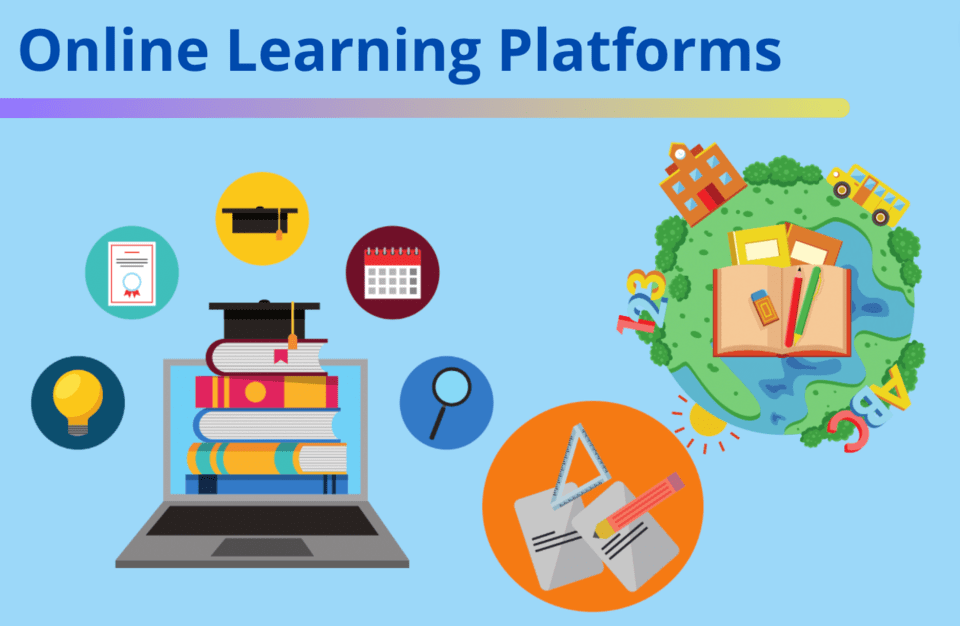Online learning has evolved into a critical mode of education over the past two decades, particularly due to technological advancements and the global COVID-19 pandemic. As more students embrace online education, educators and institutions must ensure that the benefits of digital learning are accessible to all, especially to diverse learners. Diversity in learners can refer to various factors, including socio-economic background, geographical location, cultural differences, learning disabilities, and varying levels of technological proficiency.
For online learning to be truly inclusive, it needs to address the unique needs of all students, irrespective of their backgrounds. This article explores how online learning can be made more accessible for diverse learners, ensuring that everyone has the opportunity to thrive in the digital education landscape. By focusing on equitable access to technology, inclusive teaching practices, and the development of learner-centered content, we can make online learning a more accessible and effective tool for all students.
Key Takeaways
- Bridging the Digital Divide: Providing affordable access to devices, internet connections, and mobile learning solutions is essential to ensure that all students have equal opportunities in online learning.
- Cultural and Linguistic Inclusion: Online learning content must be designed to accommodate different cultural perspectives and languages to ensure inclusivity for non-native speakers and students from diverse backgrounds.
- Universal Design for Learning (UDL): Offering multiple means of representation, engagement, and expression helps create an accessible learning environment for all students, regardless of learning preferences or disabilities.
- Continuous Support and Mentorship: Providing personalized academic support, mentoring programs, and peer networks can help ensure that students stay engaged, feel valued, and receive the guidance they need to succeed.
- Empowering Learners Through Autonomy: Allowing students to take control of their learning through self-paced courses, personalized pathways, and student-led activities fosters independence and helps learners develop critical skills.
Understanding the Challenges of Diverse Learners in Online Education

Before diving into how online learning can be made more accessible, it’s crucial to recognize the barriers that diverse learners face. These barriers include, but are not limited to:
- Digital Divide: Many learners, especially in low-income or rural areas, lack reliable internet access and appropriate devices for participating in online learning. This digital divide can create inequality in access to education, making it harder for these students to participate in online courses.
- Cultural and Language Barriers: Students from diverse cultural backgrounds or non-native speakers often struggle with language barriers and culturally insensitive course materials. This can impact their ability to engage with content effectively.
- Disabilities and Learning Differences: Learners with physical or cognitive disabilities require specialized tools and resources to participate in online learning. For instance, students with visual impairments need screen readers, while students with dyslexia might benefit from audio support or alternative reading formats.
- Inadequate Support Systems: Many online learning environments lack the face-to-face interaction and personalized support that students might receive in a traditional classroom. This can make it difficult for students to seek help when facing academic or technical challenges.
- Technological Proficiency: Not all learners are equally skilled in using digital tools. Some students, particularly older learners or those with less exposure to technology, may struggle with navigating online learning platforms.
Making Online Learning More Accessible
To ensure online learning is accessible to all students, several strategies need to be implemented. These strategies include addressing technological, pedagogical, and support-related barriers to create an inclusive and equitable learning environment.
1. Bridging the Digital Divide
The digital divide remains one of the most significant challenges in making online education accessible. To overcome this barrier:
- Provide Affordable Internet Access and Devices: Educational institutions should partner with local governments or private companies to provide subsidized or free internet access and devices for low-income families. Initiatives like these can level the playing field, ensuring that all students, regardless of socio-economic background, have the tools necessary to participate in online learning.
- Mobile Learning Solutions: In many parts of the world, mobile phones are more accessible than personal computers. Designing mobile-friendly learning platforms and course content ensures that students without computers can still access lessons and assignments through their smartphones.
- Offline Learning Materials: In regions with unreliable internet connectivity, offline resources such as downloadable course materials, videos, and apps can allow students to learn without the need for a constant internet connection.
2. Culturally Responsive and Inclusive Curriculum
To ensure that learners from diverse cultural backgrounds can fully participate in online learning, the curriculum must be designed to be culturally responsive and inclusive.
- Multilingual Content: Offering course content in multiple languages is one of the most straightforward ways to remove language barriers. Providing subtitles, translations, and language options helps non-native speakers engage more fully with the content.
- Culturally Relevant Examples: Course materials should reflect a variety of cultural perspectives and experiences, ensuring that all students see themselves represented in the curriculum. This inclusivity can enhance learning by making content more relatable to learners from different backgrounds.
- Inclusive Content Delivery: Educational platforms can also provide options for learners to adjust content to their needs. For example, users should be able to change fonts, adjust text size, or enable audio descriptions. This flexibility can make learning materials more accessible to learners with diverse needs.
3. Universal Design for Learning (UDL)
Universal Design for Learning (UDL) is a framework that aims to accommodate the needs of all learners by providing multiple means of engagement, representation, and expression. This approach is essential for making online learning accessible to students with different learning preferences and abilities.
- Multiple Forms of Content Representation: Present content in various formats such as text, audio, video, and interactive elements. This allows students with visual, auditory, or cognitive learning preferences to engage with the material in ways that best suit them.
- Personalized Learning Paths: Allow students to work at their own pace, offering options for remediation, advanced challenges, or accelerated learning. Personalized learning enables students to progress based on their individual needs and abilities.
- Interactive Learning Tools: Incorporate activities like quizzes, polls, discussions, and collaborative group work that engage students interactively, promoting deeper learning. This approach helps students who may struggle with traditional lecture-style learning formats.
4. Support Systems and Student Engagement

Students in online learning environments often feel disconnected from instructors and peers. To counteract this isolation and ensure that diverse learners have the support they need, institutions can:
- Provide Personalized Academic Support: Offer online tutoring, mentoring, and office hours. Having regular access to academic advisors or instructors via chat, video calls, or email provides students with the support they need to succeed academically.
- Peer Networks and Communities: Create opportunities for students to engage in online communities or peer study groups. This sense of community fosters collaborative learning and helps students feel supported throughout their educational journey.
- Assistive Technologies: Students with disabilities should have access to specialized assistive technologies like screen readers, speech-to-text software, and closed captioning. These technologies enable students with physical or cognitive disabilities to navigate online learning materials with ease.
5. Effective Instructor Training and Pedagogical Practices
For online learning to be inclusive, educators need training in creating accessible and engaging content. Pedagogical practices should emphasize the needs of diverse learners.
- Inclusive Teaching Strategies: Online instructors should be trained in inclusive teaching practices that accommodate various learning styles. This can include designing assessments that allow for multiple forms of response, such as written assignments, presentations, or recorded videos.
- Regular Feedback and Assessment: Provide students with timely and constructive feedback on their work. Continuous assessment, including self-assessments, peer reviews, and instructor evaluations, helps students stay engaged and understand their progress.
- Flexible Scheduling: For learners who face time zone issues or have family or work commitments, flexible scheduling options for live classes and assignments can make it easier for them to participate. Recorded lessons and asynchronous discussions allow students to learn on their own time.
Addressing Socio-Economic Disparities in Online Learning
Socio-economic disparities can often be an obstacle to equitable access to education. Students from low-income families, marginalized communities, and rural areas often face challenges in accessing the tools and resources necessary for successful participation in online learning. Therefore, addressing socio-economic disparities is a key aspect of making online learning more accessible to diverse learners.
Financial Assistance for Technology Access
To address the socio-economic barrier, online learning institutions should provide financial assistance programs, which include subsidies for devices and internet access. Additionally, institutions can partner with governments, NGOs, or private entities to offer discounts or grants for students who require financial assistance to obtain the necessary technology.
Public-Private Partnerships
Public-private partnerships can be a strategic approach to expanding access to technology. Collaborations between educational institutions and tech companies can lead to affordable access to hardware, such as laptops or tablets, and better internet infrastructure in remote areas. These partnerships can help create a more even playing field for students, ensuring that every learner, regardless of socio-economic background, has the tools they need to succeed in an online learning environment.
Creating Community Wi-Fi Zones
Many communities, especially those in rural areas, may lack sufficient infrastructure for home-based internet access. In such cases, creating public Wi-Fi zones in community centers, libraries, or local schools could provide students with the necessary internet connection to engage with online learning content. Such initiatives can help students who are geographically or economically disadvantaged access online education without the constraints of limited internet connectivity.
Leveraging Open Educational Resources (OER)
OER are digital resources, such as textbooks, lecture notes, videos, and assignments, that are freely available to anyone with an internet connection. By incorporating OER into online courses, institutions can make educational content more affordable and accessible, especially for students from low-income households who may struggle to purchase traditional textbooks or course materials.
Inclusive Assessment Methods
Assessment is a crucial part of online learning. However, traditional assessments such as exams and quizzes may not always reflect the diverse capabilities of students. An inclusive approach to assessments should provide options that accommodate various learning styles, capabilities, and disabilities.
- Alternative Assessments: Instead of relying solely on traditional exams, consider incorporating a variety of assessment types such as projects, presentations, video submissions, and peer reviews. This approach caters to different strengths and abilities, giving students with diverse learning styles the opportunity to demonstrate their knowledge in multiple ways.
- Formative and Summative Assessments: Incorporating both formative assessments (ongoing assessments throughout the course) and summative assessments (final evaluations) provides students with regular feedback on their progress. This method can help students improve over time and can be particularly beneficial for those who may need extra support.
- Support for Learners with Disabilities in Assessments: For students with disabilities, ensure that assessments are adapted to meet their needs. For instance, providing extended time for students with learning disabilities or offering alternative formats for students with visual impairments can help them perform at their best. Assistive technologies like speech recognition software can also help students demonstrate their knowledge more effectively.
Improving Teacher Training for Diverse Learning Needs
Teachers play a central role in creating an inclusive online learning environment. While many educators are familiar with traditional teaching methods, online education requires a new set of skills, particularly when catering to diverse learners.
Ongoing Professional Development
Teachers should be provided with ongoing professional development opportunities focused on inclusive teaching strategies. This can include training on Universal Design for Learning (UDL), using accessible technology, and recognizing the needs of students from different cultural backgrounds. By continuously improving their own practices, educators can become more adept at engaging diverse learners.
Culturally Responsive Pedagogy
Culturally responsive teaching involves incorporating students’ cultural backgrounds into the learning process. Educators should receive training on how to implement culturally relevant content in online courses, such as integrating diverse perspectives, using culturally sensitive examples, and considering the diverse identities and experiences of students. This approach makes students feel valued and supported in their learning environment.
Fostering Student-Teacher Relationships in an Online Setting
In a traditional classroom, face-to-face interaction between students and teachers is an essential part of building relationships. In online learning, this can be challenging. Therefore, teachers should make an effort to engage with students through personalized communication, such as one-on-one virtual meetings or regular check-ins. Creating a sense of community can foster trust and ensure that diverse learners feel supported.
Mentoring and Peer Support
In addition to teacher-student relationships, mentoring programs and peer support networks are also valuable for diverse learners. These programs can provide extra academic and emotional support, particularly for students facing difficulties in online learning environments. Peer support, especially from students with similar cultural backgrounds, can provide a sense of belonging and encourage motivation.
Enhancing Learner Autonomy and Empowerment

Diverse learners come from different educational backgrounds and often have varying levels of experience with online learning. Providing opportunities for students to develop autonomy and take control of their learning can increase engagement and ensure that online learning is a success for all.
Self-Paced Learning
Self-paced learning is an important component of online education. Offering learners the flexibility to work at their own pace, based on their individual needs, can make online education more accessible. This flexibility benefits students who may have additional responsibilities, such as caring for family members or working part-time jobs, and ensures they do not fall behind in their studies.
Personalized Learning Pathways
Personalized learning pathways allow students to follow customized learning journeys based on their interests, academic strengths, and areas where they need improvement. These pathways could include pre-assessments to determine the knowledge and skills a learner already possesses, allowing for more targeted learning experiences that cater to their needs.
Student-Led Learning
Encouraging students to take ownership of their learning through project-based activities or independent research gives them a sense of empowerment. Student-led learning promotes critical thinking, creativity, and problem-solving skills, which are crucial for academic success and future professional endeavors.
Utilizing Data to Support Learners
Institutions should leverage data analytics to monitor students’ progress and identify potential issues early. Tracking metrics such as participation rates, grades, and engagement levels can help educators intervene when students are struggling. Data-driven approaches can ensure that no student is left behind and that all learners are supported throughout their academic journey.
Also Read: How Do Online Learning Platforms Cater To Diverse Learning Styles?
Conclusion
Online learning holds great promise for making education more accessible to students from diverse backgrounds. However, achieving true inclusivity requires a multifaceted approach. Institutions must bridge the digital divide, create culturally responsive curricula, embrace Universal Design for Learning, and provide robust support systems for students. Moreover, training educators to adopt inclusive pedagogical practices and leveraging technology to assist all learners is essential for creating an accessible online learning environment. By adopting these strategies, online learning can become a powerful tool in breaking down barriers and ensuring that education is a universal right for all learners, no matter their background or abilities.
FAQs
1. What is Universal Design for Learning (UDL)?
UDL is a framework that provides a flexible approach to teaching, allowing for the diverse needs of students. It involves offering multiple ways of representing content, engaging students, and providing various means for students to demonstrate their learning.
2. How can online learning overcome the digital divide?
To bridge the digital divide, institutions should provide affordable internet access, subsidized devices, mobile-friendly learning solutions, and offline learning materials for students in underserved areas.
3. What tools can help students with disabilities in online learning?
Assistive technologies such as screen readers, voice recognition software, text-to-speech applications, and closed captioning can help students with disabilities access online course content effectively.
4. Why is cultural responsiveness important in online education?
Culturally responsive teaching ensures that all students feel represented and respected in their learning environment. It helps build a more inclusive curriculum by incorporating diverse perspectives and addressing language barriers.
5. How can instructors engage students in online learning?
Instructors can engage students through interactive activities, personalized support, and collaborative projects. Regular feedback, peer networks, and opportunities for active participation also help maintain student engagement.
6. How can online learning be more inclusive for non-native speakers?
By offering multilingual content, subtitles, and language translation options, online learning can cater to the needs of non-native speakers, allowing them to better engage with course materials.
7. How can online learning help students from disadvantaged backgrounds?
Online learning can be made accessible to disadvantaged students by providing affordable technology, flexible learning schedules, and personalized academic support. By lowering barriers to entry, institutions can ensure that all students have equal opportunities for success.




